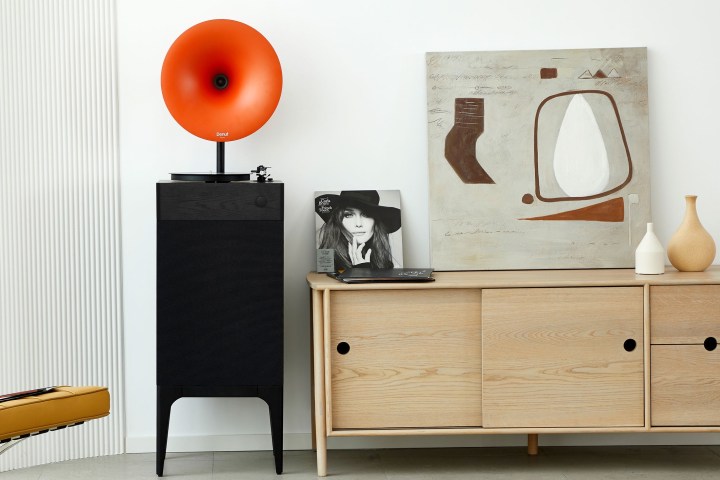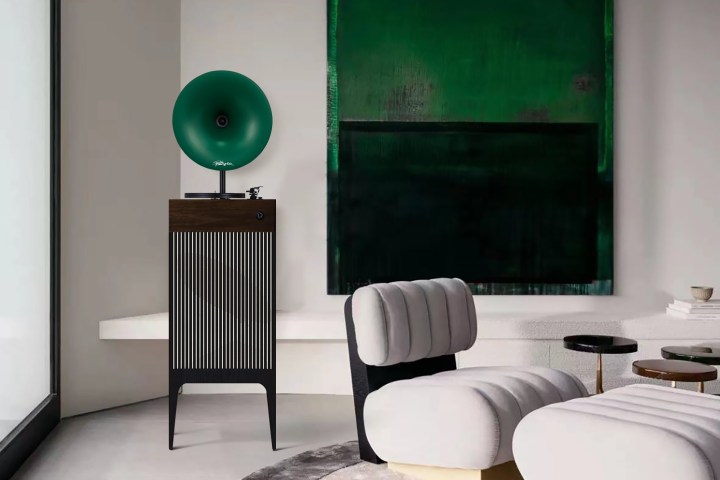Despite being someone who writes about audio products for a living, I am not a vinyl fan. I leave that anachronistic love affair to my colleagues, Caleb Denison and Derek Malcolm, both of whom will happily consume an entire afternoon on Teams discussing the finer points of turntable design, or any number of other topics related to getting the best sound out of a record. None of that excites me.
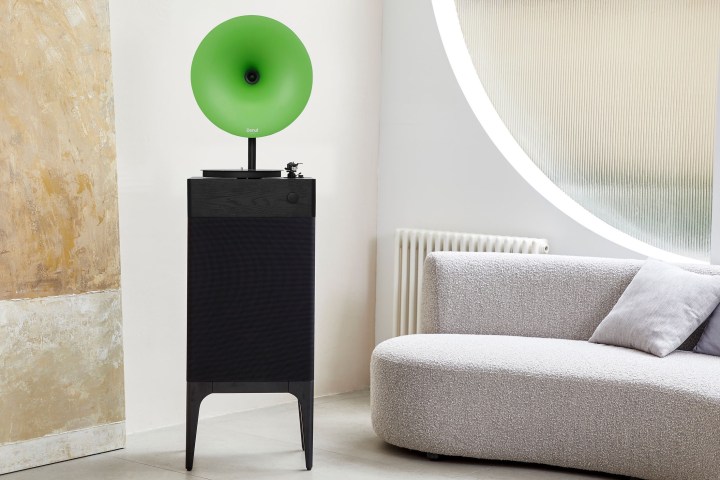
But what I do love is unusual turntable design, and I am completely besotted with the Fennessy Donut i5, a thoroughly modern interpretation of a gramophone. With its sleek lines and conversation-inspiring horn, it was love at first sight. But, sadly, I’m forced to admire it from afar. Fennessy is a China-based manufacturer that doesn’t currently sell its products in the U.S., and from what I can tell, the Donut (such a great name) isn’t carried by my usual go-to retailers for hard-to-get products, like Alibaba. But if I could buy it, it sells for 13,999 yuan (about $2,071).
As long as we’re all now window-shopping together, let’s dig a little deeper into what we’re missing. The Donut stands 5.1 feet tall and weighs 66 pounds. And though it’s designed to resemble an old-timey gramophone, that amazing, colorful horn (which Fennessy calls a “bugle”), is merely one of three sound sources. The bugle is embedded with a 10-watt, 1-inch tweeter. But concealed under the turntable is a front-firing, 40-watt 6.5-inch midrange driver, and a down-firing 60-watt 8-inch woofer. Depending on how well that system is tuned, it could sound fantastic.
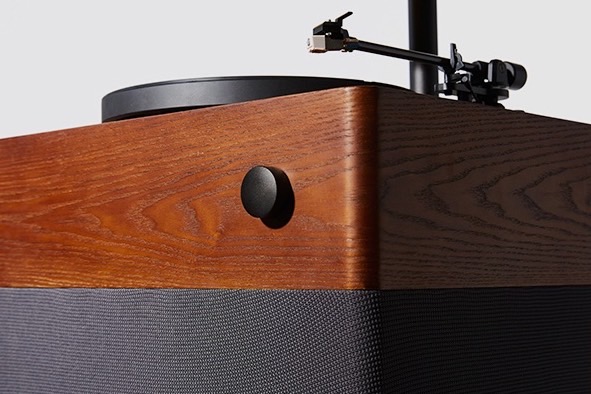
The Donut isn’t just minimalist in design, but in function, too. A single knob on the front controls power, volume, and input switching. The turntable’s signal is only processed by the system’s onboard RIAA phono pre-amp and its class-D stereo amplifier, and there are no analog or digital outputs, so you won’t be connecting it to your existing gear. There is a Bluetooth module installed, but it seems to be receive-only, so you can stream music from your phone to the Donut, but that vinyl sound won’t be going anywhere.
Speaking of vinyl (listen up, Caleb and Derek!), here’s what you need to know: The turntable is powered by a Japanese-built, microprocessor-controlled DC motor at either 33⅓ or 45 RPM. It’s a belt-driven system that turns a 2.2-pound all-metal platter that’s topped with a custom slip mat.
The tonearm is made from carbon fiber and exerts less than 3.5g of tracking force via an Audio-Technica (A-T) moving-magnet cartridge, though Fennessy hasn’t said which A-T cart it’s using, other than to say it has a 0.6mm conical bonded diamond tip.
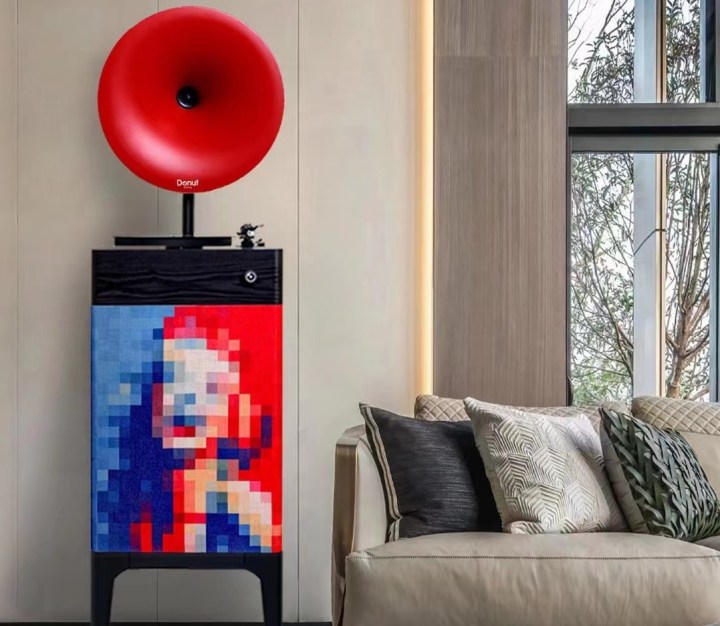
In other words, it’s a record player. I’m more interested in the fact that it comes in a crazy number of colors and designs. A standard Donut i5 is available with your choice of orange, banana, dragon fruit, red velvet, avocado, matcha, chocolate, or milk-colored bugles, with a black wooden base and fabric grille.
But Fennessy also makes special edition Donuts, like the Van Gogh, the Marylin Monroe, and the Quicksand. They’re all, in my humble opinion, stunning.
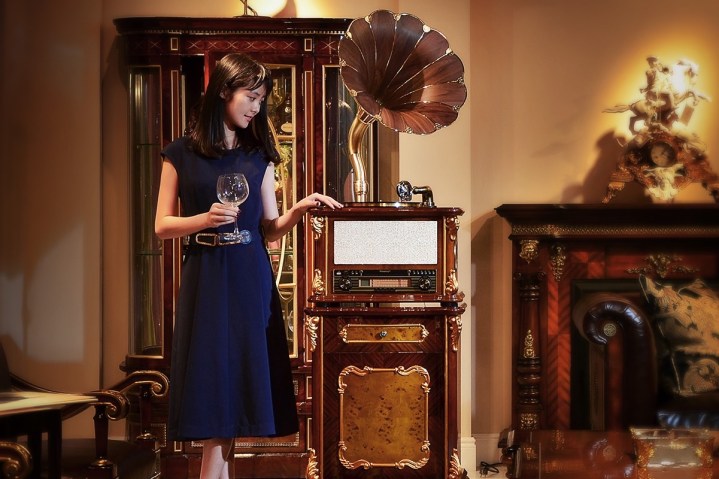
As it turns out, Fennessy isn’t just about modern-looking gramophones. If you have a taste for something more authentic, the company has a huge collection of vintage-inspired designs, featuring incredibly ornately-carved wooden cabinets and horns that are finished in an array of exotic materials.

I’m still not a big vinyl guy, but if ever there were a product that might seduce me to the charms of analog sound, one of Fennessy’s gramophones would be it.
Editors' Recommendations
- ESPN+: Live sports and more you can’t get anywhere else
- I tried Apple’s Color Balance on two TVs and I can’t decide if I like it
- Redmi’s first TV is a $530, 70-inch 4K model that you probably can’t buy
